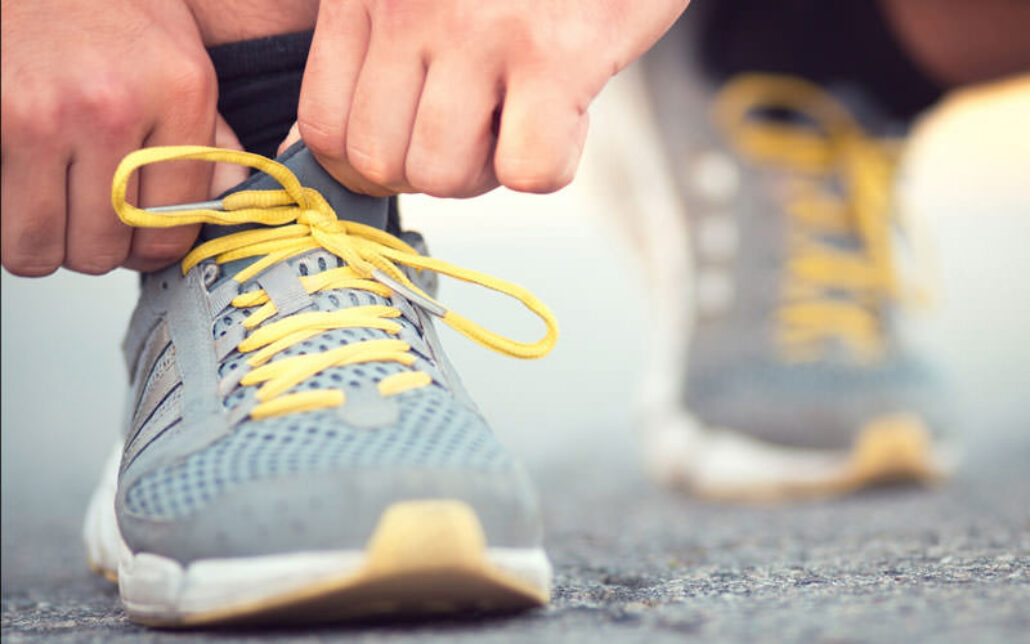A burning ache in your lower legs may be shin splints. We have guidelines for treating this common injury at home, and tips to help you determine when it’s time to turn to your Summit Orthopedics sports medicine specialist for help.
The pain of shin splints is a signal that the muscles and bone tissue around your tibia are overstressed. Fortunately, shin splint injuries can often be treated at home. Our guidelines can help you prevent shin splint injury, treat this injury at home if it does occur, and know when to contact your doctor for medical treatment.
At Summit Orthopedics, our focus is on preventing injuries before they occur. You can avoid shin splints by beginning any new activity slowly. Increase intensity by no more than 10 percent each week to give your body time to adjust. Include strengthening and stretching exercises with your workouts, and wear the right shoes for your activity. Remember to keep your equipment at its best. Runners and walkers should replace their shoes every 300 miles to maintain proper cushioning and support. Finally, stop working out as soon as you feel shin pain.
If shin pain does develop despite your efforts, don’t delay treatment. Overuse injuries need rest to heal properly. There are a number of steps you can take at home to treat inflamed tissues.
- Take a break from the high-impact activity that caused the problem, to let your legs heal.
- Use ice. Icing your shin will ease pain and reduce inflammation.
- Consider over-the-counter painkillers. Nonsteroidal anti-inflammatories like ibuprofen or aspirin will help with swelling and provide pain relief. Remember that like all drugs, these have side effects, including greater chance of bleeding or ulcers. Use them sparingly or under your doctor’s supervision.
- Consider orthotics. If you have flatfeet or collapsed arches, shoe inserts can provide additional support.
- Range-of-motion and strengthening exercises for your core and leg muscles can be helpful as long as you can do them without shin pain.
Your goal is to rest your injured leg until it has had time to heal. This can take time. Individual recovery rates vary. Be prepared to take as much as three to six months of rest and reduced activity to fully heal a shin splint injury. During your recovery period, you may be able to remain active by switching to low-impact exercise like swimming or biking—as long as these activities don’t cause shin pain.
You’ll know that your injury has healed when your leg feels flexible and strong again, and when you are able to run, sprint, and jump without pain. If your pain doesn’t go away after an extended period of rest, it’s time to consult a member of the Summit sports medicine team. Remember that shin splint injuries are cumulative. Early and prompt treatment lowers the risk of serious bone damage that could sideline you from the activities you enjoy.
Summit Orthopedics offers comprehensive sports medicine expertise
From Olympians to pro athletes to kids in youth sports and those that just want to be more active—Summit Orthopedics delivers expert care by fellowship-trained sports medicine physicians. If you are recently injured or concerned about ongoing pain, Summit Orthopedics sports medicine specialists have the expertise to evaluate your discomfort and develop a plan to quickly and safely help you get back to being active.
Start your journey to stronger, healthier athletic condition. Find your sports medicine expert, request an appointment online, or call us at (651) 968–5201 to schedule a sports medicine consultation.
Summit has convenient locations across the Minneapolis-St. Paul metro area, serving Minnesota and western Wisconsin. We have state-of-the-art centers for comprehensive orthopedic care in Eagan, MN, Vadnais Heights, MN, Plymouth, MN, and Woodbury, MN, as well as several additional community clinics.
More resources for you
- Ask Sam Olson: How Do I Find The Right Running Shoe?
- A Runner’s Guide for Healthy Knees
- Tips To Prevent Shin Splints
